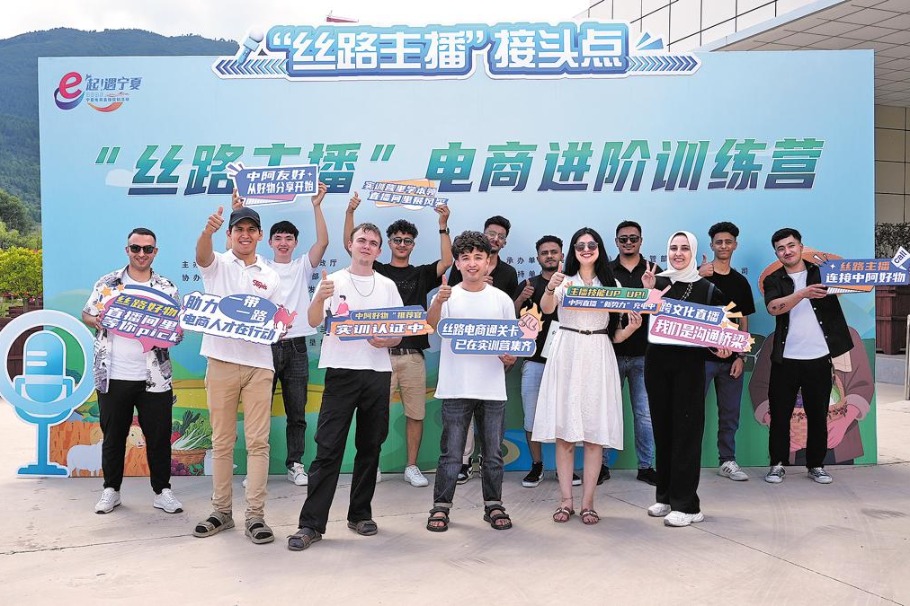Waymo faces competition from driverless taxi rivals
China Daily | Updated: 2021-12-13 10:01

Alphabet Inc's Waymo risks losing its lead in the US race to prove robotaxis are a viable business as it sticks to a limited service and rivals backed by automakers near their own launches.
Companies including Ford Motor's Argo AI and General Motors' Cruise are competing for the billions of dollars in financing needed to automate driving through artificial intelligence software and expensive sensors.
Waymo has led the field. In the first and only fully driverless taxi service in the country, Waymo has driven thousands of people since opening a year ago east of Phoenix to anyone who downloads its ride-hailing app. And since August, hundreds in San Francisco have trialled cabs with safety drivers aboard.
But Waymo lacks investment from a major automaker, which analysts say could hamper efforts to grow its fleet.
Plans Waymo touted in 2018 to buy up to 62,000 Chrysler Pacifica minivans and 20,000 Jaguar I-Pace SUVs have not materialized. A big order for cameras to give eyes to its vehicles was scaled back, a person familiar with the matter said. Partnership talks in the past with automaker Hyundai Motor also fell through, another source said.
Waymo's ride-hailing service in Arizona has not expanded beyond suburbs. It inquired about permitting for Phoenix airport rides in 2018 but has not pursued the process or approached San Francisco's airport at all, according to government records obtained by Reuters.
Waymo cars still have lessons to learn. Some mall drop-offs in Arizona seen by Reuters blocked access to disabled parking spots for minutes in what disability advocates described as a potential legal violation.
Raj Rajkumar, professor of electrical and computer engineering at Carnegie Mellon University, said high staffing costs also could contribute to Waymo's slow expansion. Riders in Arizona told Reuters that support crews in person or monitoring remotely have had to re-direct vehicles paralyzed by, among other sights, freight pallets, an errant stop sign and road-paving gear.
Waymo has a different view.
Partnerships with several automakers from around the world, rather than investment from just one, serve what it describes as unparalleled ambitions across trucking, grocery delivery and more. Waymo said it has met all production goals, introduced hundreds of I-Pace crossovers.
"It would make little sense to place a bet on an individual OEM(original equipment maker)-that would increase our risk and give us fewer future paths to market," the company said. "The future of autonomy is about much more than ride-hail services."
Tekedra Mawakana, co-CEO of Waymo, said the company was in "a robust phase of not only developing the technology but also developing commercial opportunities".
"There's a lot that goes into doing this the first time," she said. "Then you build a playbook and it's just much easier to replicate it in future cities."
Waymo recently began testing in central Phoenix, though without riders. It said personnel costs are not a determining factor in plans, and its system tries to avoid pulling over in disabled parking spots.
Cruise aims to be permitted next year for a middle-of-the-night, driverless offering in San Francisco, and Tesla Inc Chief Executive Elon Musk continues to promise fully self-driving cars. Argo says it will partner with Lyft to open robotaxis in Miami before the new year-with a safety driver present.
All the companies have missed targets or downsized plans, but some observers see a shift in Waymo's standing.
"Waymo is playing catch-up now," said Grayson Brulte, president at an autonomous mobility consultancy.
Born in 2009 as a project inside Google, Waymo has raised $5.75 billion in funding since 2020.
Some analysts viewed the resignations this year of former CEO John Krafcik and other executives as a sign of Alphabet management's disappointment in the slow progress, a charge Waymo denies. Krafcik remains an advisor.
Waymo's strategy prioritizes safety and incorporating feedback. It has avoided a major accident, a testament to its caution.
Hang Zhao, assistant professor at Tsinghua University and a former Waymo scientist, said that though it requires more engineers, Waymo has taken a safe approach to solving AI problems, especially in contrast to Tesla's tactics.
Tesla did not respond to requests for comment.
Swamy Kotagiri, chief executive of Waymo investor and auto industry supplier Magna International Inc, told analysts in July that he anticipates "a long road" for fully autonomous cars, adding that even by 2030 only "a small number" would be produced.
Waymo's heady progress and optimism catalyzed the industry, with its then-chief Chris Urmson saying in 2015 that he expected his son to rely on autonomous vehicles in 2020.
Waymo's limited supply in Arizona has led to 30-minute waits this year, according to customer Jordan Ranous, who has turned to ride share service Lyft, where dinnertime trips cost $4 more for pick-up 26 minutes sooner.
The majority of people opening Waymo's app see waits under 10 minutes, and ridership is growing, the company said.
Mawakana, a half-year into her elevated role, declined to predict when Waymo would drop safety drivers in San Francisco or might demonstrate profitability.
"What we've learned is it's not as important," she said of forecasts.
Reuters
























